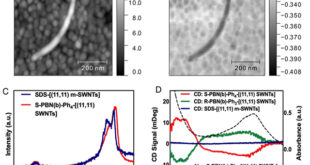Significance Statement
The use of a gas sensor device has generated lots of interest due to their promising impact in environmental pollution monitoring for real-time air quality control and in deriving optimum energy from renewable sources and high sustainability from production systems. Perovskite-type oxides as gas sensing materials satisfy some required characteristics needed, such as high sensitivity towards gas detection, favorable crystalline and electronic structures, good stability and their ability to conform to a suitable composition. Hence, it is important to have a study on synthesis factors which have both direct and indirect effects on their properties affecting sensing performances.
Fabio Zaza and colleagues discussed in a new study various conditions affecting the synthesis of sensing nanoparticles of strontium titanate perovskite oxide SrTiO3 by means of chemometric methods, including multivariate data analysis that provided mathematical models with predictive ability for optimum design of materials. The research is now published in Journal of Material Science.
In their work, Perovskite oxides sensing materials were synthetized following the auto-combustion method, according to which the citric acid was added for a double function, acting as a fuel for the combustion and a chelating agent for the dissolution of metal ions; while ammonium nitrate was added as an oxidizing agent. The effect of the fuel-oxidizer molar ratio on the SrTiO3 powders was investigated. The authors also observed various conditions at certain range such as pH levels from 2 to 12, citric acid to nitrate ion ratio from 0.09 to 0.17 and citric acid to strontium and titanium ratio from 0.63 to 2 in a synthesis of SrTiO3 powders.
At pH levels higher than 7, both the titanium citrate complex and strontium citrate complex were formed. The required total mole ratio of citric acid to that of the metal ions was selected to be 2 so as to have a complexation of all useful metals.
Results from thermal analysis indicated endothermic peaks from 60°C to 190°C that were ascribed to loss of water, free citric acid and free butyl alcohol in the gel. The maximum value of exothermic peak at 230°C was attributed to the high combustion reaction between the polymeric matrix and nitrate ions, while the subsequent exothermic peak was related to the decomposition of residual unreacted starting compounds. Perovskite crystallization occurred with no loss in weight at an exothermic peak of 400°C.
Temperature profile analysis showed that fuel-oxidizer molar ratios between 0.4 and 0.6 was the most favorable range for perovskite formation during combustion reaction. The optimum fuel-oxidizer molar ratio of 0.5 was adjudged to be the best for perovskite formation.
When they ran x-ray diffraction analysis, they observed crystallite size between 10 to 20nm and a high-frame temperature at stoichiometric conditions was also found to favor the increase of crystallite growth. Results from scanning electron microscopy images also showed that the grain size increased from 20 to 50nm with a lower porosity as the high-frame temperature approaches stoichiometric conditions.
The mathematical model computed in this study, while using the multiple regression method provided optimum experimental conditions for the development of high sensing devices that have small grain dimensions and high crystallinity. For experimental conditions, the ratio of citric acid to metal (strontium and titanium) should be equal to 2 in order to derive a high pH effect, pH level of 12 for high crystallinity and citric acid to nitrate ion ratio not equal to 0.12 for deriving small grain sizes .
The authors’ investigations coupled with the provision of a quality by design approach help in finding a suitable synthesis condition for sensor devices.

Reference
Zaza, F1. Orio, G2. Serra, E1. Quality by Design Approach for SrTiO3 Perovskite Nanomaterials Synthesis, Journal of Material Science 51 (2016) 9649–9668.
[expand title=”Show Affiliations”]- ENEA-Casaccia Research Centre, Rome, Italy
- La Sapienza University, Rome, Italy
Go To Journal of Material Science
 Advances in Engineering Advances in Engineering features breaking research judged by Advances in Engineering advisory team to be of key importance in the Engineering field. Papers are selected from over 10,000 published each week from most peer reviewed journals.
Advances in Engineering Advances in Engineering features breaking research judged by Advances in Engineering advisory team to be of key importance in the Engineering field. Papers are selected from over 10,000 published each week from most peer reviewed journals.




